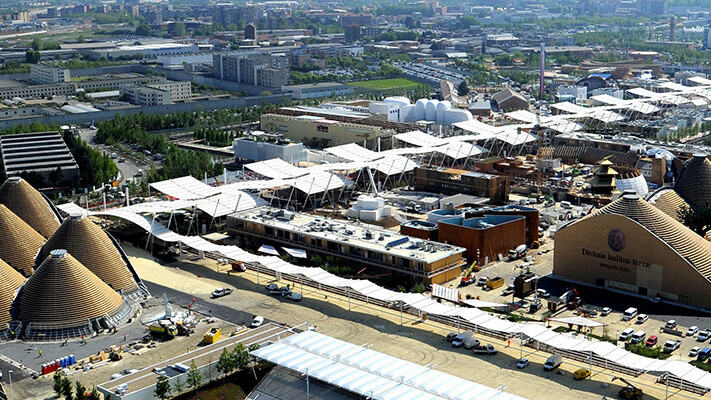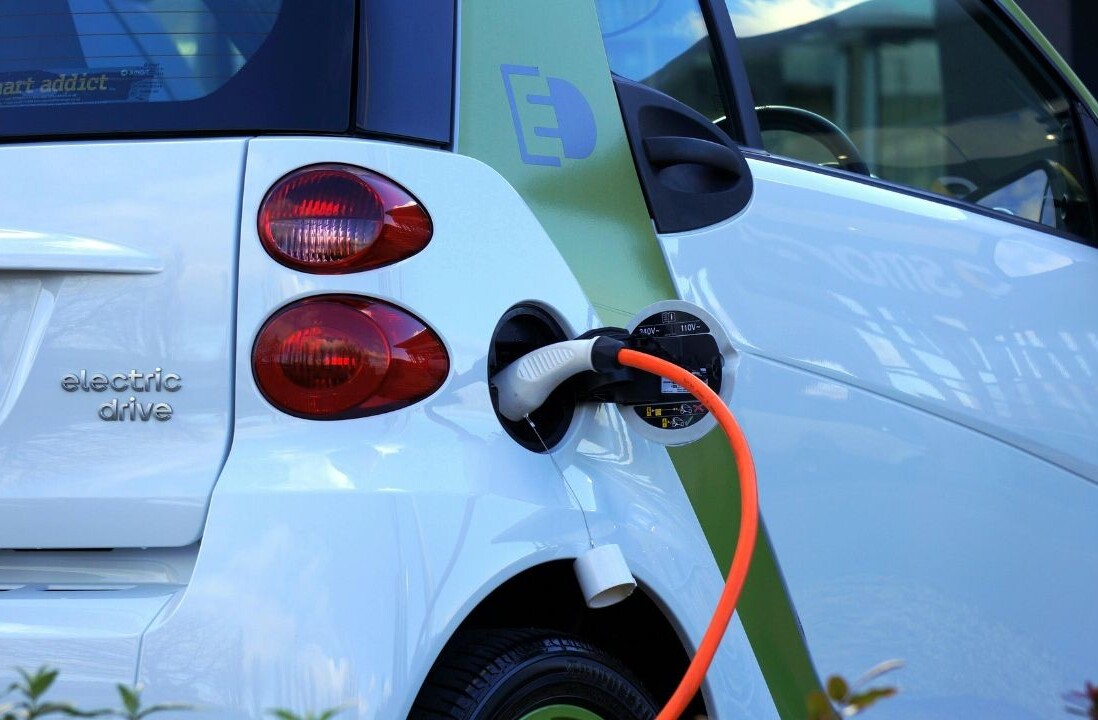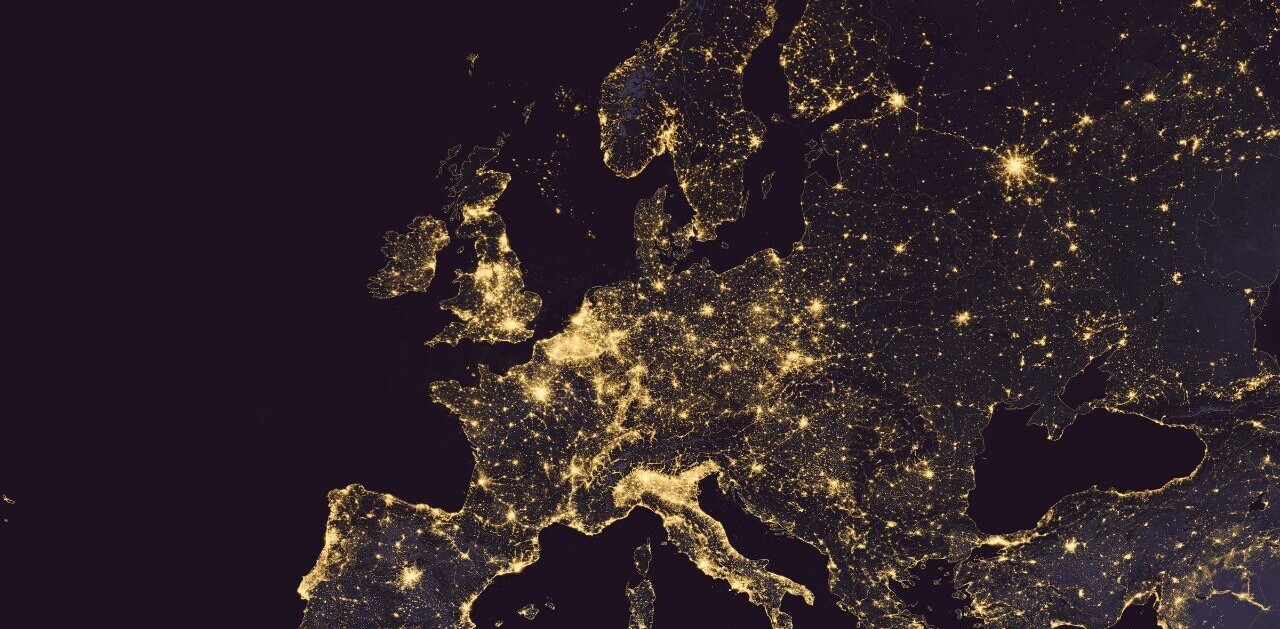
Today sees the close of the current ‘World’s Fair,’ in Milan, Italy. The six-month-long Expo Milano 2015 showcased tech innovation, especially from Italy, and while much will be written about the cost and legacy of the event, I’d like to argue that the host country made a clever use of this opportunity to show off its startups.
Since the theme of the exhibition was ‘Feeding the Planet, Energy for Life,’ many of the highlighted projects had to do with foodtech (though not all of them). Whether it entirely managed to draw attention to food issues around the world is a debate I won’t get into; but it did succeed in demonstrating that startups would be part of the solution.
A gigantic fair
 The numbers around Expo are quite impressive: earlier this month, its commissioner Giuseppe Sala announced that it had topped the 20 million visitors mark since its opening in May. While this meant sometimes welcoming 250,000 visitors a day, Expo was more than big enough to accommodate them, with 1.1 million square meters of exhibition area.
The numbers around Expo are quite impressive: earlier this month, its commissioner Giuseppe Sala announced that it had topped the 20 million visitors mark since its opening in May. While this meant sometimes welcoming 250,000 visitors a day, Expo was more than big enough to accommodate them, with 1.1 million square meters of exhibition area.
Due to the event’s scale, its organizers opted for a cross-shape plan that not only would make it easier for people to get around, but was also charged with meaning: “”In many modern cities, the cross, typical of the roman camp – or castrum – is still evident as the form of the town.
It was a distinctive perpendicular shape and the two street crossings were known as the Cardo and the Decumano. This shape has been the inspiration for the building of the Expo Milano 2015 Exposition Site,” Expo’s site reads.
Besides this nod to the Roman era, the map also took diplomacy into account: “Running from east to west, the Decumanus is the place where all the pavilions face the street, in a “democratic” disposition that has all the countries on the same level and with the same amount of front space.

The rear, of course, may vary in size, from the near 5,000 sqm of the German pavilion to the less than 600 sqm of the Bulgarian,” the organizers wrote in a guide for journalists.
When I visited Expo this summer, I was very impressed by its scale, and by the architecture on display outside and inside of the biggest pavilions, none of which looked alike in design. It would have been impossible to visit them all, but I did enter quite a few, and unfortunately that part was sometimes a bit underwhelming (despite a few interesting experiments around interactivity).
On one hand, the need for crowd control, while understandable, often meant standing in line for quite a bit before being ushered into each space as a group, with about as much freedom as cattle. On the other hand, several countries saw Expo’s theme as a chance to blabber about their agriculture in self-congratulatory fashion, and even the pavilions that tackled food insecurity more directly often did so in quite boring and institutional language.
However, Expo’s theme was also reflected much more tellingly in its many food stands, whose purpose was to give visitors “the opportunity to find out about, and taste, the world’s best dishes.” This was a welcome alternative to the waffle inside many pavilions, and it worked: not only were there queues at most food venues during daytime, but many people were still hanging around at Expo to grab a bite or have a fancy dinner in the evening after pavilions had closed.
Italy in the place of honor
With a theme like food, the host country Italy was naturally well placed to display its gastronomy and best products. Known for its gastronomic megastores around the world, Italian food chain Eataly boasted a 8,000 square meter pavilion that had nothing to envy to some large countries, and also featured an art exhibition aimed at representing Italy’s heritage.
Yet, Italy did more than reminding Expo visitors of its capacity to attract tourists and serve them great food. Indeed, it also proved able to provide them with a solid Internet connection everywhere — and not only in the media center as it happens in many large events. More generally, it did its best to look at its future and not just at its past, which I found to be the most interesting part of Expo.
Unsurprisingly, the Italian pavilion was huge, with a total of 14,000 square meters and several buildings. They were symbolically located at the crossroads between the Decumano and the 350 meter long Cardo, forming Piazza Italia, which was “designed to be a welcoming place, where Italy meets the world.”

The largest Italian building is called Palazzo Italia, or ‘Italy Palace’. Built by architectural firm Studio Nemesi, it is set to become a center for technological innovation for the city of Milan after Expo’s closedown. Its main exhibition revolved around the Italian identity, and was based on 4 pillars: The Power of Expertise, The Power of Beauty, The Power of the Challenge, The Power of the Future.
In practical terms, this meant that anyone visiting the Palazzo would not only learn about Italy’s landscapes and masterpieces, but also about its challenges, such as cultivating vineyards on arid hillsides or rebuilding after natural disasters. This made for an interesting mix: the exhibition didn’t shy away from addressing some of Italy’s challenges, while also showcasing some innovative solutions and the people behind them.
Italian innovators
One of the rooms that caught my attention featured miniature figures of Italian innovators, handpicked by the organizers for their creativity in dealing with food- and agriculture-related issues across the country. One of them was Andrea Rosani, an engineer and entrepreneur from the autonomous province of Trentino, in Italy’s far north.
As I later learned, Rosani’s venture is called Melixa, and develops innovative beehives that enable smart monitoring. Using a combination of IoT devices that include an activity sensor, temperature sensors, a rain sensor, GPS and accelerometer, it helps professional beekeepers and hobbyists keep track of their bees. According to Wired Italy, the company now plans to use some of the public and private funding it has raised to add features such as an anti-theft system for hives.

Another entrepreneur represented in the gallery was Francesco Cucari, from the Southern Italian region of Basilicata. Cucari was only 18 when he started developing his project, Dizionario dei Rifiuti, ‘dictionary of waste,’ “the first search engine in Italy dedicated to recycling.”
Using its Web and mobile platform, citizens can easily find out what goes in which bin and where to dispose of trickier items such as batteries. Cucari’s tool already features local data from 70 Italian cities, and the dictionary also got a new version for Expo, including translations that could help it expand beyond Italy.

In the Power of the Future section, the focus on tech and innovation was even more present, with invitations to think, for instance, of what it would be like to grow tomatoes on Mars.
Closer to us, it also presented recent trends such as the use of drones in agriculture, and the potential of smartphones for food-related apps. One of those was GeniusFood, which helps consumers take food allergies into account when shopping for groceries and planning meals.
That room also featured a miniature of the Tree of Life, the 37 meter tall tree-shaped structure that has become of one of the icon of Expo.
Located at the center of Expo’s ‘Lake Arena’ and designed by the artistic director of the Italian pavilion Marco Balich, it was meant to be “at one and the same time, a monument, a sculpture, an installation, a building, and a work of art.” Its light and water shows were one of the highlights of Expo, and another reminder of the power of technology.

Startup events
Still within the Italian pavilion but outside of Palazzo Italia, other startup-related events took place during Expo. For instance, a space called Vivaio delle Idee — “Ideas Nursery” — could be found in the lounge of the Minister of Agriculture, Forestry and Environmental Policies (Mipaaf).
Together with public-private alliance Italia Camp Foundation, the Ministry was one of the main sponsors of this initiative aimed at showcasing “Made in Italy” food and farming innovation, with a focus on startups, university spin-offs and entrepreneurs.
The Nursery’s journey started months ahead of Expo, with a selection process that gathered more than 350 projects from all across Italy, followed by a road trip through seven Italian cities for the winners to meet potential partners.
While at Expo, they took part in several events, including a few demo-day-style “Opportunity Days” to help them network with investors. The last one took place earlier this week, and featured projects ranging from a virtual sommelier and an app for pizzerias to a method hoping to remove gluten from wheat flour.

It is worth mentioning that some of the startups and initiatives presented at Expo had little or nothing to do with foodtech. Several events held on September 29th were related to the Northern city of Brescia, which introduced its awarded public-private partnership, “Brescia Smart Living.” In addition, Brescia-born co-working space network Talent Garden organized a workshop on startup funding and presented Festival Supernova, a “creative innovation festival” with editions in Turin, Brescia and Kaunas (Lithuania).
The discussion on startup financing took place in Casa Corriere, the Expo pavilion of newspaper Corriere della Sera. It included a panel with several Italian startups, such as Bemyeye, Cloudesire, Lanieri, Musement, Sellfapp and Xmetrics; it was followed by the official launch of cloud-based file transfer service ASweSend, also from Brescia.
Beyond Milan
Despite Expo taking place in Milan, which is responsible for 9 percent of the national GDP, the Italian pavilion made efforts to represent innovative initiatives taking place in other regions — including less affluent ones. While this could have felt strained, it was actually quite interesting to hear about entrepreneurs from different cities, which were keen to show that they had more to offer than gastronomy and tourism.
For example, I found out while reading about Expo that the University of Palermo had fostered a very promising spin-off called In.sight. Its main app is called Arianna, a reference to Ariadne’s thread, and was once described by the MIT Technology Review as “a virtual cane for the blind.” In.sight was one of the startups participating in Sicily’s Going to Expo initiative, promoted by Spring Sicily and FabLab Palermo.

Among the cities that put a particular focus on startups when presenting themselves at Expo, I also noticed Piacenza, located about one hour away from Milan. The city was presenting several initiatives supported in part by funding from the Emilia-Romagna region, including a three-year-old startup competition called Start Cup, as well as some of its past winners.
As you can imagine, there was so much going on that this article is by no means exhaustive; for instance, a lot could be written about Expo’s social media presence, and the way each country framed its participation. Still, having seen quite a few country pavilions, I was left with the impression that Italy was keener than others to showcase its startups, and did a fairly good job at it.
But, as much as I love technology, I would be lying if I didn’t confess that my personal favorite thing at Expo was actually a dish: an amazing saffron risotto by Italian chef Davide Oldani, one of Expo’s ambassadors. When it comes to food, Italy is definitely a safe bet.
Get the TNW newsletter
Get the most important tech news in your inbox each week.





